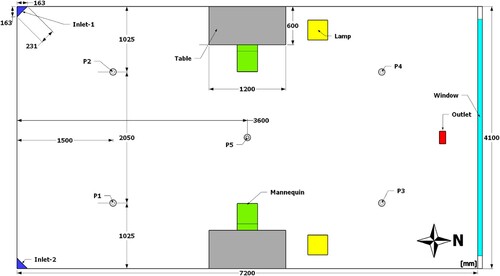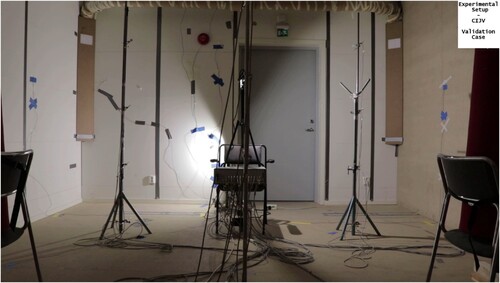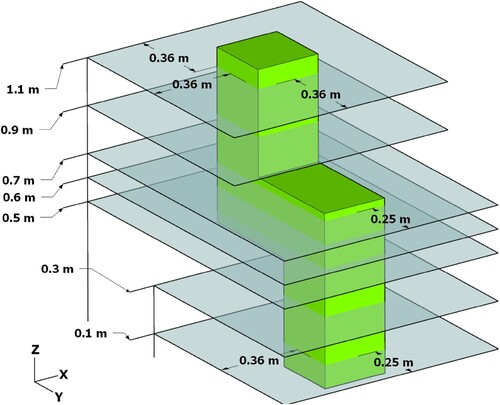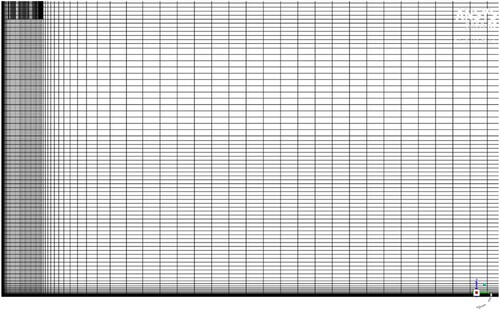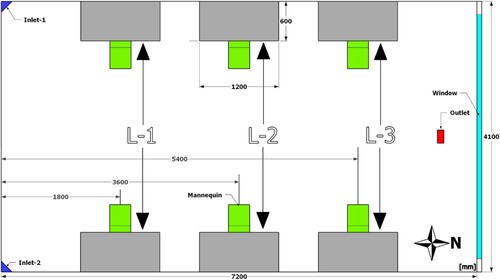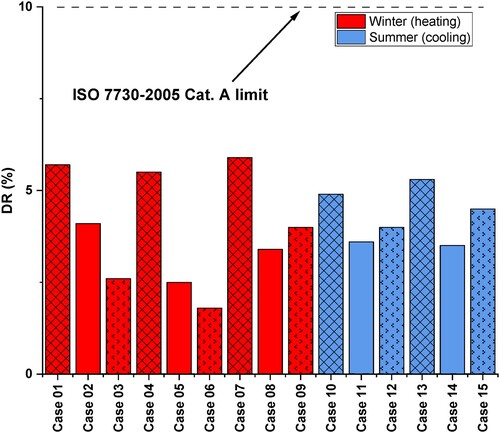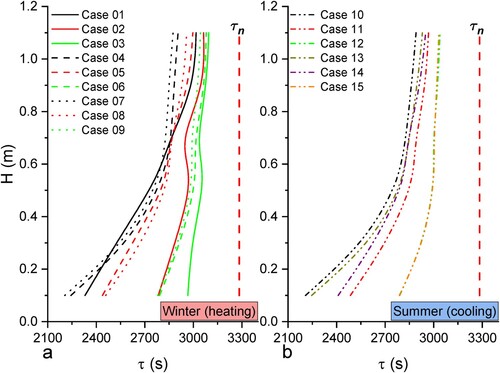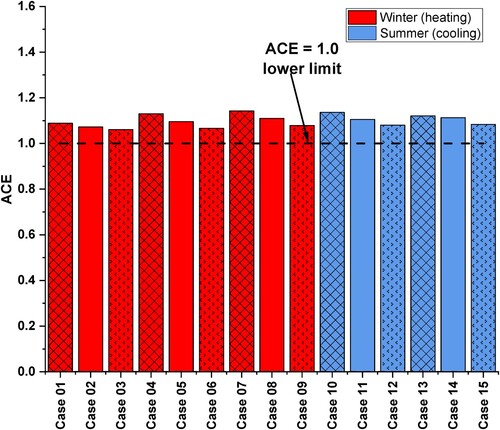Figures & data
Figure 7. (a–j) Temperature and velocity profile comparisons for different turbulence models and experimental measurements at different locations (P1–P5).

Table 1. ACE comparison between experimental and CFD at five locations.
Table 2. Case conditions and parameter settings when evaluating the impact of different outdoor environment and supplied air temperature.
Figure 9. (a) Shows the horizontal averaged temperatures at different heights in the occupied zone (See ) for winter cases and (b) for summer cases.
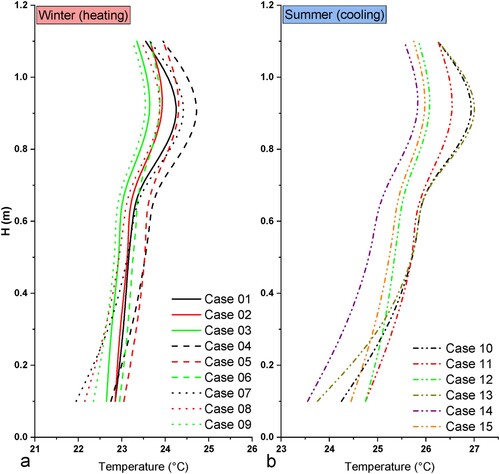
Figure 10. The temperature difference between the height of 1.1 and 0.1 m in the occupied zone for all cases.
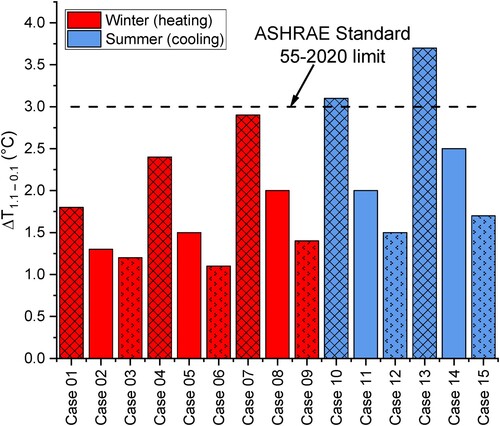
Figure 11. (a) Shows the horizontal averaged PMV level at different heights in the occupied zone (See ) for winter cases and (b) for summer cases.
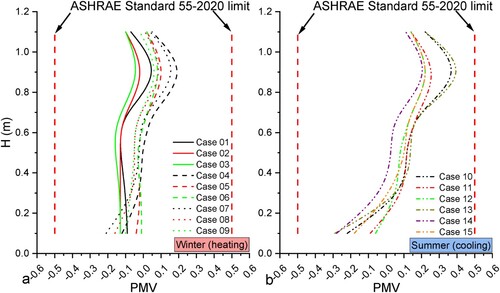
Figure 12. (a) Shows PPD level at different heights in the occupied zone for winter cases. (b) Shows PPD level at different heights in the occupied zone for summer cases.
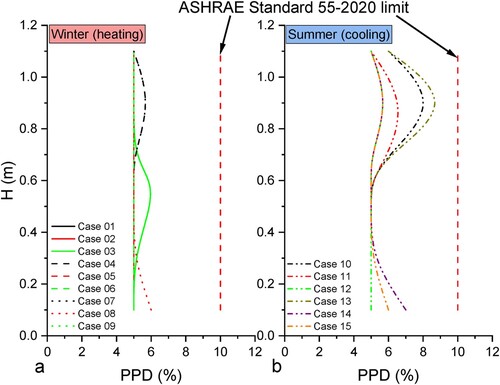
Data availability
Data will be made available on request by contacting the corresponding author.

